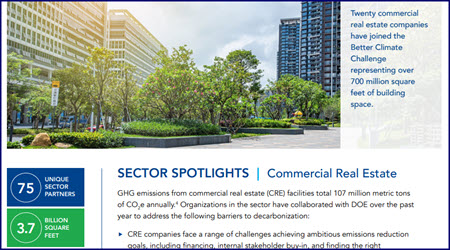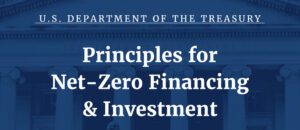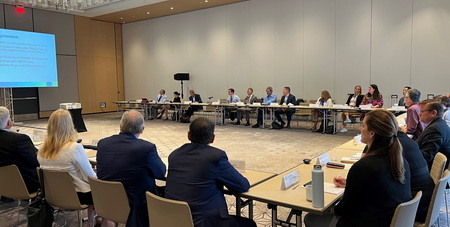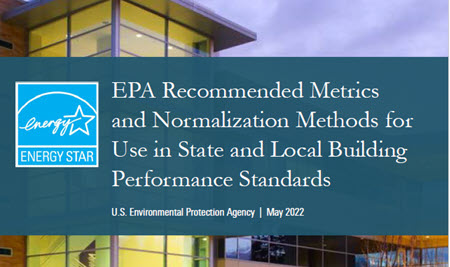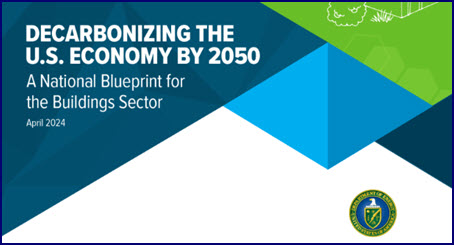
Reducing greenhouse gas (GHG) emissions from buildings is the focus of a “national strategy document” released this week by the Biden administration. The Department of Energy (DOE) “blueprint” has no regulatory impact on private sector assets, but it articulates aspirational goals to reduce building-related emissions 65% by 2035 and 90% by 2050. (Department of Energy (DOE) news release, April 2 and Politico EnergyWire, April 3)
Four Pathways
“Decarbonizing the U.S. Economy by 2050: A National Blueprint for the Buildings Sector” outlines four action categories:
- Increase Building Energy Efficiency
DOE acknowledges the value of federal tools that help building owners and jurisdictions benchmark, track, and improve efficiency (e.g., ENERGY STAR Portfolio Manager, Portfolio Manager Data Explorer)—all supported by The Real Estate Roundtable. (Roundtable Weekly, March 22) - Reduce On-site Emissions
DOE notes that building electrification with heat pumps is a primary strategy for reducing on-site, fossil-fuel fired building emissions. DOE’s goal also includes reducing on-site emissions from fluorinated gas (including equipment refrigerant leakage), foam-blowing agents, and fire suppressants. (DOE document pages 26-28) - Transform the “Grid Edge”
Federal efforts could help buildings better connect with the power grid through storage methods, on-site renewable generation, and EV charging. (DOE document pages 28-30) - Minimize Embodied Life Cycle Emissions
The document lists strategies to reduce embodied emissions, including repurposing existing buildings, new construction methods, and reducing emissions intensity of construction materials. (DOE document pages 31-32)
Noteworthy Recommendations

- The Biden administration framework acknowledges the need for CRE owners to access whole-building utility data. Metrics on building energy usage can be used to complete requirements for benchmarking and building performance disclosures. State regulators and local governments could support emission reduction goals by requiring utility companies to provide customers with access to tenant-meter data. (DOE document page 52)
- The blueprint recognizes the need for government-sponsored low-interest loans and tax credits to support clean power projects at buildings. (DOE document page 40 and Table 5, page 43)
- The blueprint also encourages federal-level resources to help city and state governments implement building performance standards (BPS). The Roundtable supports non-binding federal guidelines that bring order and national consistency to the conflicting patchwork of local BPS mandates. (DOE document pages 24-25 and 50-51 | Roundtable Weekly, Sept. 15)
DOE plans to vet these recommendations for federal actions to reduce building emissions in the future with a wide range of stakeholders, track progress on their implementation, and amend the document as needed.
# # #

